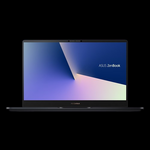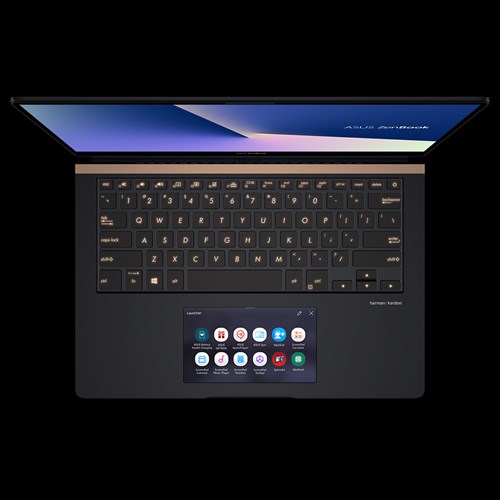Asus ZenBook Pro 14 UX480FD
Specifications

Price comparison
Average of 2 scores (from 5 reviews)
Reviews for the Asus ZenBook Pro 14 UX480FD
Source: NDTV Gadgets
 Archive.org version
Archive.org versionAsus knows that it will grab headlines and eyeballs with the ScreenPad, but we fear that real-world use will prove to be a bit complicated. A secondary Users will especially struggle with when to use it like a touchscreen as opposed to a trackpad. A lot will also depend on software makers, and wide support is not guaranteed, considering that this isn't an industry standard. We'll have much more detail when we get to use and live with the new ZenBook Pro models over a longer period of time. If and when Asus launches them in India, we'll have a full, detailed review.
Comparison, online available, Short, Date: 06/05/2018
Source: Hardware Zone
 Archive.org version
Archive.org versionASUS’ new ZenBook Pro 14 and 15 have two screens each, and that’s not even due to some new-fangled design in the style of the company’s Project Precog concept PC. Instead, the 5.5-inch trackpads on the laptops serve double duty as touchscreen IPS displays, and they’re meant to improve your ability to multi-task.
Comparison, online available, Medium, Date: 06/05/2018
Foreign Reviews
Source: Com! - 6/19

Single Review, , Short, Date: 05/15/2019
Rating: Total score: 95%
Source: Computerhoy
 ES→EN Archive.org version
ES→EN Archive.org versionSingle Review, online available, Very Long, Date: 06/09/2019
Rating: Total score: 89%
Source: Xataka
 ES→EN Archive.org version
ES→EN Archive.org versionPositive: Powerful hardware; high performance; nice display.
Single Review, online available, Long, Date: 06/06/2018
Comment
NVIDIA GeForce MX150: Pascal GP108 based laptop graphics card and mobile version of the desktop GeForce GT 1030. Offers 384 shader cores and usually 2 GB GDDR5 with a 64 Bit memory bus. Manufactured in 14nm.
Modern games should be playable with these graphics cards at low settings and resolutions. Casual gamers may be happy with these cards.
» Further information can be found in our Comparison of Mobile Graphics Cards and the corresponding Benchmark List.
i5-8550U: Kaby-Lake-Refresh based low power quad-core processor. The four cores are clocked between 1.8 and 4 GHz (Turbo Boost) and support HyperThreading. The integrated GPU is clocked between 300 and 1,150 MHz. The SoC is manufactured in a 14nm+ FinFET process.» Further information can be found in our Comparison of Mobile Processsors.






